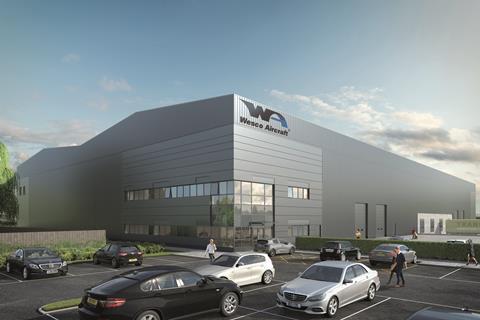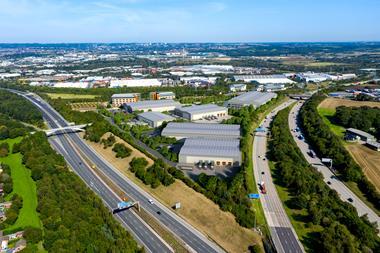There has been a lot of talk over the past few years about the opportunity to deliver ‘beds and sheds’ projects – the co-locating of housing and industrial and logistics facilities on the same site – yet few schemes have been delivered to date.

However, on the outskirts of Dewsbury, West Yorkshire, Caddick Developments is pushing ahead with a site that will deliver around 250,000 sq ft of industrial space and 166 homes.
Caddick recently secured a 70,000 sq ft letting to US aerospace giant Wesco Aircraft at the £27.5m GDV Moor Park 25 in Mirfield and has just submitted plans for an additional 180,000 sq ft of industrial space at the site, which is in an enterprise zone.
Detailed planning permission for phase one of the site, which Caddick is delivering in partnership with Taylor Wimpey, was granted in 2018, with the housebuilder poised to deliver 166 two- to five-bedroom homes.
Myles Hartley, managing director at Caddick, says the site forms part of the group’s wider strategy of developing “mid- and big-box” logistics schemes in well-connected locations close to population centres as part of its £5bn ‘beds and sheds’ pipeline.
“As a group, our focus is on structurally supported asset classes such as build-to-rent and industrial/logistics, where we see long-term growth potential thanks to a mismatch between demand and supply,” says Hartley.
“Building on our track record of delivering industrial and logistics properties across both our development and construction arms, we plan to ramp [up] our activity in the sector over the coming year. Mid-box sheds – smaller units close to urban locations – like those at Mirfield will form a key part of the pipeline.”
Multiple benefits
He adds that co-locating beds and sheds makes perfect sense as one of the “key challenges for logistics and industrial businesses is finding the right staff and one of the obvious ways we can help is to build new homes close by”.
Hartley says the company has paid careful attention to the design of the scheme, with a particular emphasis on noise mitigation and landscaping, to ensure the residential component is unaffected by industrial activity.
“This mix [of beds and sheds] works for occupiers as they have a pool of labour close by and is good for potential employees, who can choose to live close to where they work,” he explains. “What’s more, local authorities like it because it makes these communities more sustainable. If you can live within a mile of where you work, then there are all sorts of social and environmental benefits, such as reduced car use.
“We’re looking at a number of schemes where we can deliver this mix and where local authorities are supportive.”





























No comments yet